Astra Novobelgiya, planting and care, use in landscape design
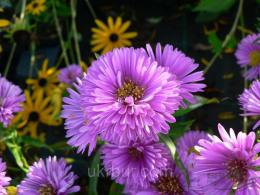
Asters - one of the most common and familiar perennial street flowers for every gardener in the middle zone. The bright shades of star buds make any area elegant, memorable and will delight summer residents and flower growers for a long time with gorgeous blooms.
Content:
- Characteristics of the New Belgian aster
- The most common varieties
- Rules for planting and propagating plants
- Features of care
- Pest and disease control
- New Belgian aster in landscape design
Characteristics of the New Belgian aster
The homeland of this species is the eastern region of North America, distributed in forests, steppes, and mountainous areas before the beginning of the taiga. Is rhizomatous perennial plant, the shape is reverse pyramidal.
The stems are strong, from 55 to 150 cm, have many branches in the upper part, and whether they are covered with hair or smooth depends on the varietal characteristics. The bush is leafy, and the foliage on the stems is arranged in sequence. The leaves are lanceolate in shape with a blunt base, sessile, elongated, and have slightly serrated edges. The rhizome is thin, horizontal and highly branched.
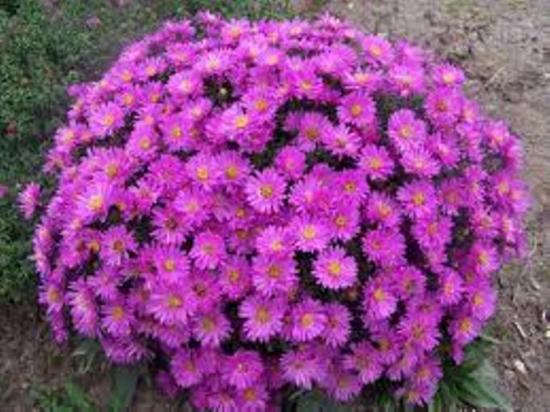
The flowers are collected in inflorescences in the form of baskets consisting of many small flowers. The inflorescences are large, paniculate, sometimes including up to 200 fragments.
The reeds located at the edges have bright shades: pink, yellow, raspberry burgundy, blue, red, white.And in the middle of the inflorescence there are tubular yellow centers. They are small in size, the average width is 2-5 mm, and the diameter of the inflorescence is from 2 to 8 cm.
In such tubular centers, flat, long seeds dark shade. Each seed has a “parachute” similar to dandelions, thanks to which it scatters well from the mother bush.
Flowering occurs at the beginning of autumn, and flowering caps persist even with the onset of frost.
The most common varieties
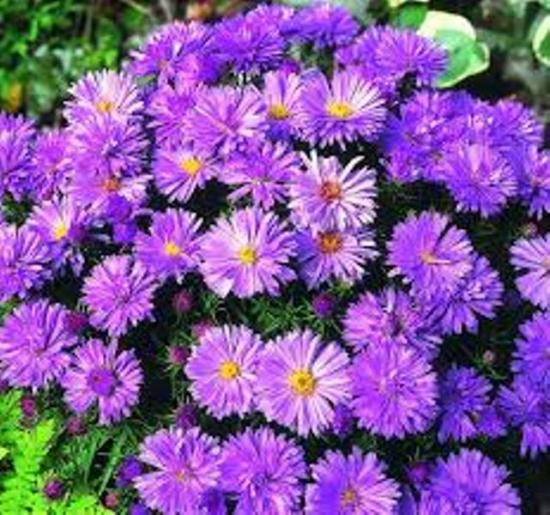
New Belgian varieties asters There are many bred by breeders, but the following are the most popular:
- ballard
- sunset
- planty
- Saturn
- Sam Beckham
- royal blue
- Mont Blanc
- Beachwood Rival
- adena
- royal ruby
- Azov
- Bengal
Marie Ballard
The variety was bred in 1955 by Ernest Ballard. The bush of this variety grows up to 90 cm in height. It is smooth, with straight stems, well leafed, and blooms in early autumn. The stems are dense, so the bush does not require garter.
Reed flowers are white, and tubular flowers are yellow. Inflorescences are from 5 to 8 cm in diameter. Flowering is long, more than 1.5 months. The variety is actively used for flower arrangements and mono flower beds.
Dick Ballard
These plants reach a height of a meter, inflorescences are 3 cm in diameter. The reed flowers are pink, and the centers of the inflorescences are yellow. The bush blooms for about a month.
Oktoberfest
Semi-double variety, growing up to 100 cm. Spreading bush, semi-double baskets up to 4 cm. Reed flowers are blue, and bloom for about a month.
Nancy Ballard
High bush, more than 1.5 m high, densely leafy. The inflorescences are not large in size, no more than 3 cm. Reed flowers are colored blue, pink, purple, lilac, and tubular flowers are yellow.
The variety is very decorative, therefore it is widely used in floristry both in single compositions and in bouquets, greenhouses and flower beds.
Mont Blanc
Tall variety from 120 to 145 cm in height, requires garter to a support. It begins to bloom in September and continues for up to 2 months with beautiful white double flowers (diameter 3-4 cm).
White ledies
Herbaceous perennial about 100 cm in height. It is considered frost-resistant, blooms from September until frost. The flowers are snow-white, small in size, and densely located throughout the bush.
Amethyst
Tall perennial with a dense plexus of stems and branches. Flowering begins at the end of August and lasts more than 2 months. The color is dark purple, small, but there are a large number of them on the bush, reminiscent of daisies.
Sam Bankham
One of the most common varieties with white flowers. This is a tall, spreading shrub up to 150 cm in height. The stems are straight, well leafed with green leaves with a glossy surface. Blooms for 30 days from the beginning of September. The shrub is completely covered with flowers and looks very decorative and elegant.
Royal blue
A neat, small herbaceous perennial, up to 130 cm in height with strong, straight stems. With the beginning of flowering, the bush is transformed: it is all strewn with semi-double inflorescences of a soft blue, lilac hue with yellow centers.
Sunset
Tall and voluminous bush with small dark green leaves. Baskets come in various shades: from lilac and pink to deep purple. It begins to bloom in early autumn.
Rules for planting and propagating plants
Asters are not pretentious plants; they love well-lit sunny areas, protected from strong drafts.Growing in the shade noticeably slows down their development and leads to elongated and brittle stems.
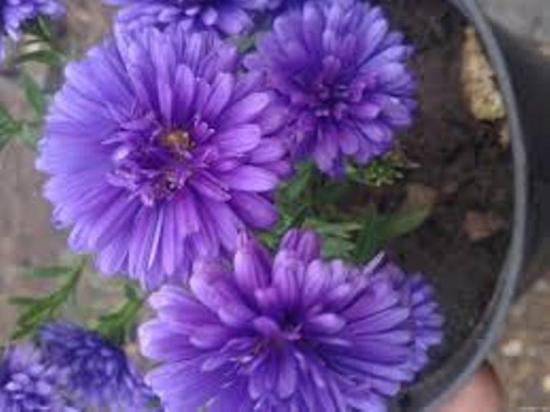
The soil is desirable to be nutritious, loose with a fertile layer depth of at least 25-30 cm. If the soil in your area is overly acidic, you can neutralize it dolomite flour. There are several types of landing.
Seedless
That is, sowing seeds directly into the garden bed. Sowing is carried out before the onset of cold weather in November and December. If you bought the seeds in a store, they need to be kept in the refrigerator for about a week and soaked at room temperature for 7 hours.
And if the seeds are just ripe and grown independently, then they do not require additional preparation. The seeds are distributed over small furrows, thoroughly watered with warm water and lightly sprinkled with soil.
After the first 3 leaves appear, it is recommended to thin out. Try to maintain a distance of 12-15 cm between young shoots.
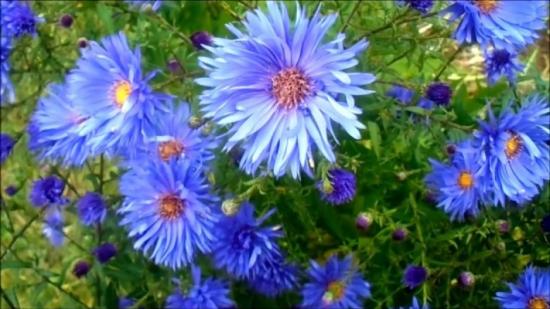
Rassadnaya
It is carried out more often after purchasing seeds, which, as in the previous method, are scarified. Soil for planting can be purchased at the store or prepared independently.
To do this, mix peat, mullein, coarse sand and turf in a ratio of 7:1:1:1 and the resulting mixture is spilled with a weak solution of manganese for disinfection. After sowing, the containers are placed in a lighted and warm place, the seed is often watered and ventilated.
After the sprouts appear, it is advisable to reduce the temperature to 15 degrees and install additional lighting in the form of photo lamps. Young plants are fed several times: when 3 true leaves appear and 6-7 days before planting in open ground. Seedlings are planted at the age of 62-65 days, having been hardened in advance at a temperature of +10 degrees.
New Belgian aster loves space, so seedlings are better plant at a distance of about 40 cm, and other plants should be chosen that are drought-resistant, as it will grow quickly and actively consume moisture from the soil.
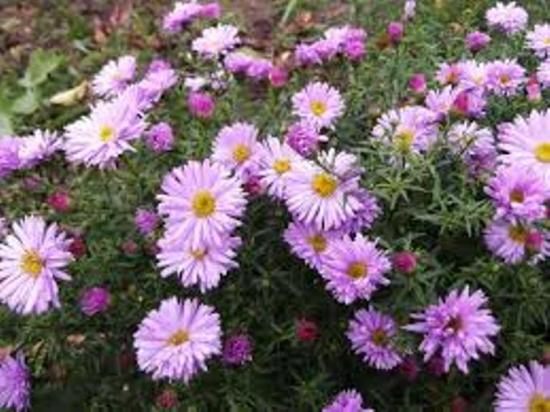
Flowering after transplantation to a permanent place occurs after a year or several years.
Propagation is suitable for varietal flowers cuttings. Cuttings are carried out in May - June until August. Cuttings from the top, 6-7 cm long, are used. The cut shoots are planted in fertile soil (the ideal composition is turf soil, sand, peat, 2:1:1), and covered with plastic film on top for 3-4 weeks until rooting.
Features of caring for aster
It is not difficult to grow, it is an unpretentious plant and requires little attention; the main actions should be aimed at:
- Watering. With periodic rains, additional watering will not even be required, and especially if there is mulch. Watering with warm water is required only during dry periods, but the plant cannot be flooded; watering should be moderate.
- Weeding. For perennials, weeding combined with loosening is important. It removes crust on the soil surface, gives oxygen access to the roots and retains moisture in the soil.
- Feeding. Fertilizing is carried out in the phase of the first 2-3 leaves, before planting seedlings in a pot or in open ground and during the appearance of buds. Complex fertilizers at a dosage of 25-40 mg/sq.m. are suitable for this purpose.
- Dividing the bush. The plant grows quickly and it is advisable to divide the bushes into several parts once every few years. This is done in early spring. And once every 5-6 years, the soil of the flower garden is enriched and transferred to another place. Faded flower stalks are always cut off, and tall bushes are tied to a support.
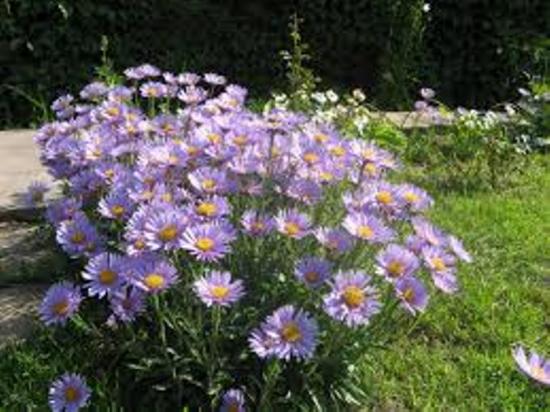
Shelter for the winter is not required; all varieties are characterized by frost resistance. The exception is plants that were divided in the fall and did not have time to take root. To preserve the bush, use shelter in the form of sawdust or spruce branches.
Pest and disease control
Of the diseases, asters are most susceptible to:
- powdery mildew;
- rust;
- verticillium wilt.
The following will help you avoid and get rid of them:
- Correct agricultural technology.
- High-quality composition soil.
- Treatment with special chemicals to combat diseases.
And the most common pests are:
- aphid;
- mites;
- slobbering pennies;
- acaricides.
The following will help prevent and get rid of insects:
- Compliance with the timing and distance of planting seedlings.
- Digging a flower bed in autumn.
- Fertilizer application.
- Removing fading, dying parts.
- Special chemicals protect against pests.
New Belgian aster in landscape design
This type of aster is ideal for decorating a site. It quickly grows into large decorative “caps”; plants with large buds look good against their background.
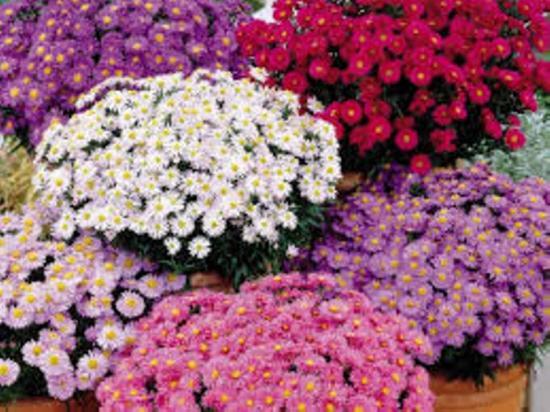
The bushes can be planted as hedges or whimsical green sculptures. And designers also love this look for the opportunity to decorate with it any unattractive corner on the site or in the garden.
They rarely do without asters and alpine coaster, rockeries. There they occupy leading positions. Long and late flowering allows you to extend the life of the alpine hill until frost. Low-growing varieties are often used to frame or border garden paths and flower beds. To do this, they are planted tightly in one row.
To create more complex compositions and designs, plants of several colors are used, the main thing is to choose the right color combinations and then the result will be impressive.
Asters in pots can decorate not only the garden, but also balconies and terraces. And florists make bright, unusual bouquets of asters; varieties with terry baskets - inflorescences - look especially impressive.
The bouquets are not only beautiful, but also smell pleasant, with a subtle sweet aroma.
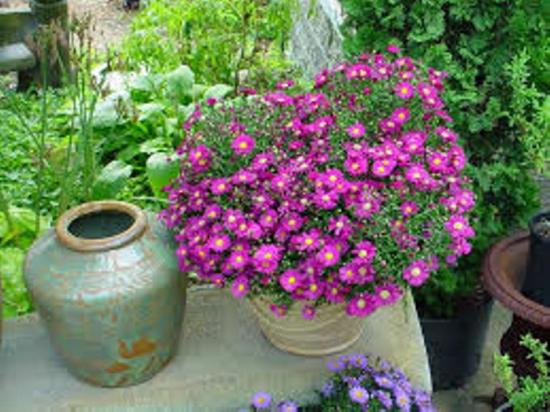
A favorite direction for gardeners is growing New Belgian asters (or September asters) in flower pots. For these purposes, low-growing dwarf varieties 50 - 60 cm in height are best suited. Many annuals are combined with such bushes: marigold, zinnias, cosmos, nasturtium. This composition will decorate a terrace, veranda or balcony from spring to frost.
The New England aster has more lush and spreading bushes, strewn with small flowers, unlike its Novobelsky relative, and has many dwarf species.
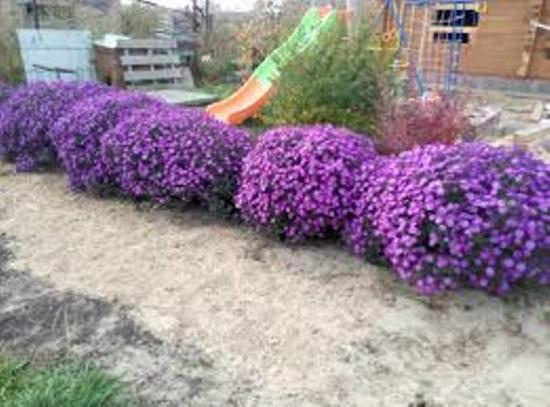
Flowers that end the summer season in bloom are always memorable and pleasing to the eye, even with the onset of frost. These cute shrubs carry a bit of summer warmth and sun, are persistent, and are suitable for growing in open ground and in flower pots on balconies and terraces.
Detailed information about growing an amazingly beautiful plant - the New Belgian aster - when watching the video:

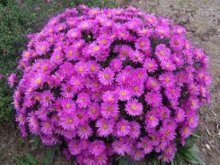
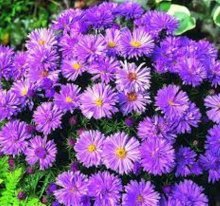
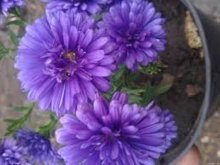
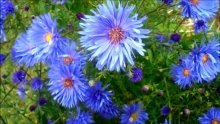
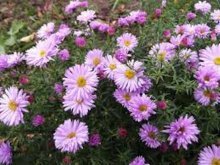
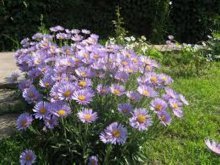
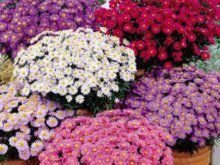
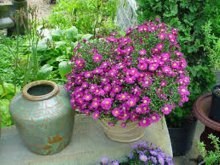
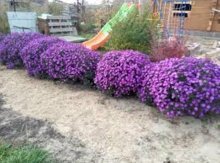
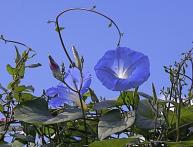
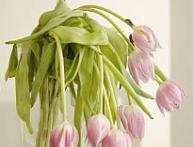
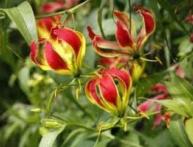
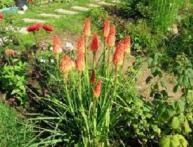

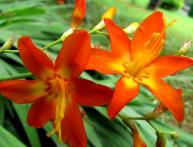
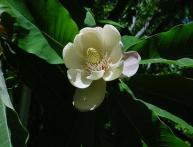
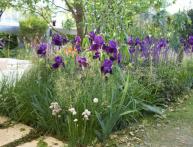
Comments
Astra Novobelgiyskaya grows in our dacha in the central flowerbed. Looks very good, blooms for a long time. In general, all the flowers in our central flower bed are long-blooming and it looks great!